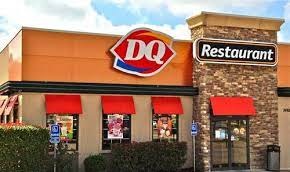From Fast Food to Fresh Food: How Meal Prepping is Transforming American Diets


For many Americans, fast food has become the go-to option for meals due to its convenience and affordability. However, this trend has resulted in a decline in overall health and well-being. In recent years, meal prepping has emerged as a popular alternative to fast food. This involves preparing meals in advance, often for the entire week, and storing them for later consumption. By taking the time to plan and prepare healthy meals, Americans are making a conscious effort to prioritize their health and well-being. Meal prepping is not only transforming American diets but also offering a practical solution to the busy lives that many Americans lead.
Table of Contents:
- The Fast Food Culture in America
- The Impact of Fast Food on American Health
- The Rise of Meal Prepping
- Benefits of Meal Prepping for American Diets
- How Meal Prepping Works
- Meal Prepping Tips and Tricks for Busy Americans
- The Role of Meal Delivery Services in Meal Prepping
- Meal Prepping for Specific Diets and Health Goals
- Conclusion: The Future of Meal Prepping in America
The Fast Food Culture in America
Fast food has become an integral part of American culture. The convenience, affordability, and speed of service that fast food restaurants offer have made them a popular choice for many Americans. However, the rise of fast food has come with a significant cost to public health. In this article, we explore the origins and impacts of the fast food culture in America.
Origins of Fast Food Culture in America
The fast food industry in America can be traced back to the early 20th century, when drive-in restaurants began to emerge. These restaurants allowed customers to order food without leaving their cars, providing a new level of convenience. The first drive-in restaurant, Kirby’s Pig Stand, opened in Dallas, Texas, in 1921, and was followed by the famous McDonald’s franchise in 1940.
As the number of fast food restaurants increased, so did their popularity. In the 1950s, fast food restaurants began to adopt a standardized menu and service system, which allowed them to offer faster service and lower prices. This led to a significant increase in the number of fast food restaurants, making fast food a staple in American culture.
Impact of Fast Food Culture on American Health
While fast food may be convenient and affordable, it has been linked to a range of health problems. Fast food is typically high in calories, fat, sugar, and salt, and low in nutrients such as vitamins, minerals, and fiber. Consuming too much fast food has been linked to obesity, heart disease, type 2 diabetes, and other health problems.
According to the Centers for Disease Control and Prevention (CDC), more than one-third of American adults are obese. This is a significant health concern, as obesity increases the risk of several chronic diseases, including heart disease, stroke, and some types of cancer.
In addition to the health impacts, the fast food industry has also been criticized for its impact on the environment. The production of fast food requires large amounts of resources, including land, water, and energy. The packaging and transportation of fast food also contribute to waste and pollution.
Conclusion
The fast food culture in America has had a significant impact on public health and the environment. While fast food may be convenient and affordable, it is important to be aware of its health impacts and make informed choices about what we eat. By choosing fresh, whole foods and cooking at home, we can prioritize our health and wellbeing while also supporting sustainable food systems.
The Impact of Fast Food on American Health
Fast food has become a ubiquitous part of American culture, with fast food restaurants found on nearly every street corner. While fast food may be convenient and affordable, it has also been linked to a range of health problems. In this article, we explore the impact of fast food on American health.
Health Problems Linked to Fast Food
Fast food is often high in calories, saturated and trans fats, salt, and sugar, and low in nutrients such as vitamins, minerals, and fiber. Consuming too much fast food has been linked to several health problems, including:
- Obesity: The high calorie and fat content of fast food can lead to weight gain and obesity. According to the Centers for Disease Control and Prevention (CDC), more than one-third of American adults are obese.
- Type 2 diabetes: A diet high in fast food has been linked to an increased risk of developing type 2 diabetes. This is because the high sugar content of fast food can cause insulin resistance, which impairs the body’s ability to regulate blood sugar levels.
- Cardiovascular disease: Fast food is often high in saturated and trans fats, which can raise levels of LDL (bad) cholesterol and increase the risk of heart disease.
- High blood pressure: The high salt content of fast food can raise blood pressure, which is a major risk factor for heart disease and stroke.
- Digestive problems: Fast food is often low in fiber, which can lead to digestive problems such as constipation and bloating.
Effects of Fast Food on Children’s Health
The impact of fast food on children’s health is particularly concerning. Children who consume a diet high in fast food are more likely to develop obesity, type 2 diabetes, and other health problems. Fast food is also often marketed to children, using tactics such as colorful packaging, toys, and celebrity endorsements to appeal to young audiences.
Conclusion
The impact of fast food on American health is a significant concern. While fast food may be convenient and affordable, it is important to be aware of its health impacts and make informed choices about what we eat. By choosing fresh, whole foods and cooking at home, we can prioritize our health and well-being and reduce our risk of developing chronic health problems.
The Rise of Meal Prepping
In recent years, meal prepping has become increasingly popular as people seek to prioritize healthy eating and save time in their busy lives. Meal prepping involves planning and preparing meals in advance, usually for the week ahead. In this article, we explore the reasons behind the rise of meal prepping and the benefits it offers.
Reasons for the Rise of Meal Prepping
- Healthier Eating: One of the primary reasons for the rise of meal prepping is the desire to eat healthier. By preparing meals in advance, people can control the ingredients and portion sizes, and ensure they are consuming a balanced and nutritious diet.
- Time-Saving: In our busy lives, finding time to cook healthy meals can be a challenge. Meal prepping can help save time by reducing the need for daily meal planning and cooking.
- Cost-Effective: Preparing meals in advance can also be cost-effective, as it allows people to buy ingredients in bulk and avoid the expense of eating out or buying pre-packaged meals.
- Convenience: Having healthy meals ready to go in the fridge or freezer can be incredibly convenient, particularly for those with busy schedules or limited access to healthy food options.
Benefits of Meal Prepping
- Healthier Eating: By preparing meals in advance, people can ensure they are eating a balanced and nutritious diet, which can help improve overall health and well-being.
- Time-Saving: Meal prepping can save time during the week, as there is no need to plan and prepare meals daily.
- Cost-Effective: Preparing meals in advance can also save money, as it allows people to buy ingredients in bulk and avoid the expense of eating out or buying pre-packaged meals.
- Reduced Food Waste: By planning meals in advance and only buying the ingredients needed, meal prepping can also help reduce food waste.
- Increased Variety: Meal prepping can allow for greater variety in the diet, as people can experiment with different recipes and ingredients.
Conclusion
The rise of meal prepping reflects a growing interest in healthy eating and time-saving strategies. By planning and preparing meals in advance, people can enjoy the benefits of healthier eating, time-saving, cost-effectiveness, and reduced food waste. Whether you are looking to save time, money, or prioritize your health, meal prepping is a simple and effective way to achieve your goals.
Benefits of Meal Prepping for American Diets
Meal prepping, the practice of preparing meals in advance, has gained popularity in recent years as more Americans look to improve their diets and lead healthier lifestyles. In this article, we explore the benefits of meal prepping for American diets and why it’s a smart choice for anyone looking to make positive changes to their eating habits.
Helps to Control Portions
Portion control is essential to a healthy diet, but it can be difficult to achieve when eating out or grabbing quick meals on the go. Meal prepping allows you to control the size of your meals and ensure you are not overeating or consuming too many calories.
Saves Time
In today’s fast-paced world, time is a valuable commodity. Meal prepping can save time by reducing the need for daily meal planning and cooking. By preparing meals in advance, you can have healthy and nutritious meals ready to go in the fridge or freezer, making it easier to stick to a healthy eating plan.
Reduces Stress
Meal prepping can also reduce stress, particularly for busy individuals or families with hectic schedules. By having meals planned and prepared in advance, there is no need to worry about what to eat or spend time cooking after a long day.
Helps to Stick to a Budget
Eating out or ordering takeout can be expensive, particularly if done regularly. Meal prepping can help you stick to a budget by buying ingredients in bulk and preparing meals at home.
Increases Variety in the Diet
Meal prepping allows for greater variety in the diet, as people can experiment with different recipes and ingredients. This can help prevent boredom and ensure that individuals are getting a variety of nutrients in their diet.
Promotes Healthy Eating Habits
By meal prepping, individuals can ensure they are consuming a balanced and nutritious diet, which can help improve overall health and well-being. By controlling the ingredients and portion sizes, meal prepping can also help individuals manage chronic health conditions such as diabetes or heart disease.
Conclusion
Meal prepping is a smart choice for anyone looking to improve their diet and lead a healthier lifestyle. By controlling portions, saving time, reducing stress, sticking to a budget, increasing variety in the diet, and promoting healthy eating habits, meal prepping can have significant benefits for American diets. By making meal prepping a part of your weekly routine, you can take control of your diet and prioritize your health and well-being.
How Meal Prepping Works
Meal prepping has become increasingly popular in recent years, as more people recognize the benefits of planning and preparing meals in advance. But how does meal prepping work, and how can you get started with this healthy and time-saving practice?
What is Meal Prepping?
Meal prepping involves preparing meals in advance, typically for the week ahead. This can involve cooking large batches of food, portioning them out into individual containers, and storing them in the fridge or freezer until ready to eat.
There are several ways to approach meal prepping, depending on your individual preferences and dietary needs. Some people prefer to cook all their meals for the week on one day, while others may cook in smaller batches throughout the week. It’s important to find a method that works for you and fits into your lifestyle.
How to Get Started with Meal Prepping
Getting started with meal prepping can be simple and straightforward. Here are some steps to follow:
- Plan your meals: Decide what meals you want to prepare for the week ahead. This could include breakfast, lunch, dinner, and snacks.
- Make a shopping list: Once you’ve decided on your meals, make a shopping list of all the ingredients you’ll need.
- Shop for groceries: Head to the grocery store or shop online for your ingredients. Consider buying in bulk to save money.
- Cook and prep: Cook your meals and portion them out into individual containers. Label the containers with the contents and the date.
- Store and reheat: Store your meals in the fridge or freezer until ready to eat. Reheat in the microwave or oven when ready to serve.
Tips for Successful Meal Prepping
- Start small: If you’re new to meal prepping, start with just one or two meals per week and gradually increase as you become more comfortable with the process.
- Invest in quality containers: Invest in high-quality containers that are microwave and dishwasher safe.
- Use versatile ingredients: Choose ingredients that can be used in multiple meals, such as roasted vegetables, grilled chicken, and quinoa.
- Don’t forget snacks: Preparing healthy snacks, such as cut-up vegetables or homemade trail mix, can help prevent unhealthy snacking throughout the day.
- Mix it up: Try new recipes and experiment with different flavors and ingredients to keep meal prep exciting and interesting.
In Conclusion
Meal prepping can be a simple and effective way to save time, money, and stress while prioritizing your health and well-being. By planning your meals, shopping for ingredients, cooking and prepping in advance, and storing your meals properly, you can set yourself up for success and make healthy eating a part of your weekly routine.
Meal Prepping Tips and Tricks for Busy Americans
Meal prepping is a great way to save time, and money, and make healthy eating a priority in your busy life. However, it can be overwhelming and time-consuming to plan and prepare meals for the week. With these meal-prepping tips and tricks, busy Americans can make meal-prepping a breeze.
- Start with a plan: Before you start meal prepping, create a plan for the week ahead. Decide what meals you want to prepare, make a grocery list, and schedule time for cooking and prepping.
- Keep it simple: Don’t try to make complicated meals with lots of ingredients. Stick to simple recipes that can be easily prepared in bulk.
- Use leftovers: Make use of leftovers from meals throughout the week. For example, roasted vegetables from dinner can be added to a salad for lunch the next day.
- Cook in batches: Cook large batches of proteins like chicken, fish, or tofu and use them throughout the week in different meals.
- Invest in quality containers: Invest in high-quality containers that are microwave and dishwasher-safe. Glass containers are a great option as they can be used in the oven as well.
- Label and organize: Label your containers with the contents and the date. Keep your meals organized in the fridge or freezer to make meal times easy and stress-free.
- Make use of the freezer: Freeze meals in individual portions for a quick and easy meal option on busy days.
- Prep snacks: Prepping healthy snacks, such as cut-up veggies or homemade trail mix, can help prevent unhealthy snacking throughout the day.
- Get the family involved: Meal prepping can be a fun activity for the whole family. Get everyone involved in the planning, shopping, and cooking process.
- Don’t forget about variety: Switch up your meal prep routine to avoid getting bored with the same meals. Try new recipes or experiment with different spices and seasonings.
In conclusion, meal prepping can be a game-changer for busy Americans who want to prioritize their health and well-being. By following these tips and tricks, meal prepping can become a seamless and enjoyable part of your weekly routine. With a little bit of planning and preparation, you can set yourself up for success and make healthy eating a priority in your life.
The Role of Meal Delivery Services in Meal Prepping
Meal prepping has become a popular way for busy Americans to save time, money, and eat healthier. However, for those who are short on time or lack cooking skills, meal prepping can still be a challenge. That’s where meal delivery services come in – they offer a convenient solution for those who want to enjoy the benefits of meal prepping without the hassle.
Meal delivery services provide pre-portioned ingredients and recipes for customers to cook at home, which takes away the need for meal planning, grocery shopping, and meal prep. This is especially helpful for those who have a busy schedule or are new to meal prepping.
One of the benefits of using meal delivery services for meal prepping is the convenience factor. Many meal delivery services offer online ordering, home delivery, and even the option to pause or cancel subscriptions. This makes it easy for busy individuals to access healthy meals without sacrificing their time or convenience.
Meal delivery services also offer a variety of meal options, including vegan, gluten-free, and low-carb options, which cater to different dietary needs and preferences. This is especially helpful for those who may not have the time or knowledge to create well-rounded meals that meet their dietary needs.
Furthermore, meal delivery services provide customers with healthy and flavorful meals by using high-quality, fresh ingredients sourced locally and seasonally. This is a great option for those who may not have access to fresh produce or quality ingredients at their local grocery store.
However, meal delivery services can be more expensive than traditional meal prepping. It’s important to weigh the cost and benefits before choosing a meal delivery service and to choose one that fits your budget and lifestyle.
In conclusion, meal delivery services can play a valuable role in meal prepping for busy Americans. They offer convenience, variety, and quality ingredients that can make healthy eating easier and more accessible. Whether you’re a busy professional or a new cook, meal delivery services can help you save time and effort while still enjoying the benefits of meal prepping.
Meal Prepping for Specific Diets and Health Goals
Meal prepping has become a popular trend in recent years, as more people are seeking a healthier lifestyle. One of the benefits of meal prepping is that it allows individuals to have more control over what they eat and how much they eat. Meal prepping can be especially helpful for those who have specific diets or health goals. Here are some tips for meal prepping for specific diets and health goals.
- Low-carb meal prep: For those following a low-carb diet, it’s important to focus on high-protein and high-fiber foods, while limiting starchy and sugary foods. Good options for low-carb meal prepping include grilled chicken or fish, roasted vegetables, salads with plenty of leafy greens, and healthy fats like avocado or nuts.
- Vegetarian or vegan meal prep: For those following a vegetarian or vegan diet, it’s important to focus on plant-based proteins like beans, tofu, and tempeh, as well as plenty of vegetables and fruits. Good options for vegetarian or vegan meal prepping include veggie stir-fry, quinoa or lentil salads, and roasted vegetables.
- Gluten-free meal prep: For those following a gluten-free diet, it’s important to avoid foods that contain wheat, barley, or rye. Good options for gluten-free meals prepping include brown rice or quinoa bowls with plenty of vegetables and lean protein, salads with gluten-free grains like millet or sorghum, and gluten-free snacks like rice cakes or popcorn.
- Weight loss meal prep: For those looking to lose weight, it’s important to focus on lean proteins, complex carbohydrates, and healthy fats, while limiting processed and high-calorie foods. Good options for weight loss meals prepping include grilled chicken or fish, roasted vegetables, salads with plenty of leafy greens and lean protein, and healthy snacks like fresh fruit or vegetables with hummus.
- Muscle-building meal prep: For those looking to build muscle, it’s important to focus on high-protein foods like chicken, fish, eggs, and lean beef, as well as complex carbohydrates like sweet potatoes or quinoa. Good options for muscle-building meals prepping include grilled chicken or fish with roasted sweet potatoes or quinoa, salads with plenty of leafy greens and lean protein, and protein-packed snacks like Greek yogurt or protein bars.
In conclusion, meals prepping can be a great tool for those with specific diets or health goals. By planning and prepping healthy meals ahead of time, individuals can stay on track with their nutrition goals and make healthy eating more convenient and accessible. Whether you’re following a low-carb diet, a vegetarian or vegan diet, or looking to lose weight or build muscle, there are plenty of meal prep options to choose from.
Conclusion: The Future of Meal Prepping in America
In conclusion, meal prepping is becoming increasingly popular in America, and it is likely to continue growing in popularity in the coming years. With more people concerned about healthy eating, saving time, and reducing food waste, meal prepping offers a practical solution that meets all these needs. As technology advances, we can expect to see new tools and apps that make meal planning and prepping even more efficient and convenient. Additionally, as more people become interested in sustainability and reducing their carbon footprint, meal prepping can help reduce food waste and promote eco-friendly practices. Overall, the future of meal prepping in America looks bright, and it is likely to remain an important part of the healthy eating landscape for years to come.



